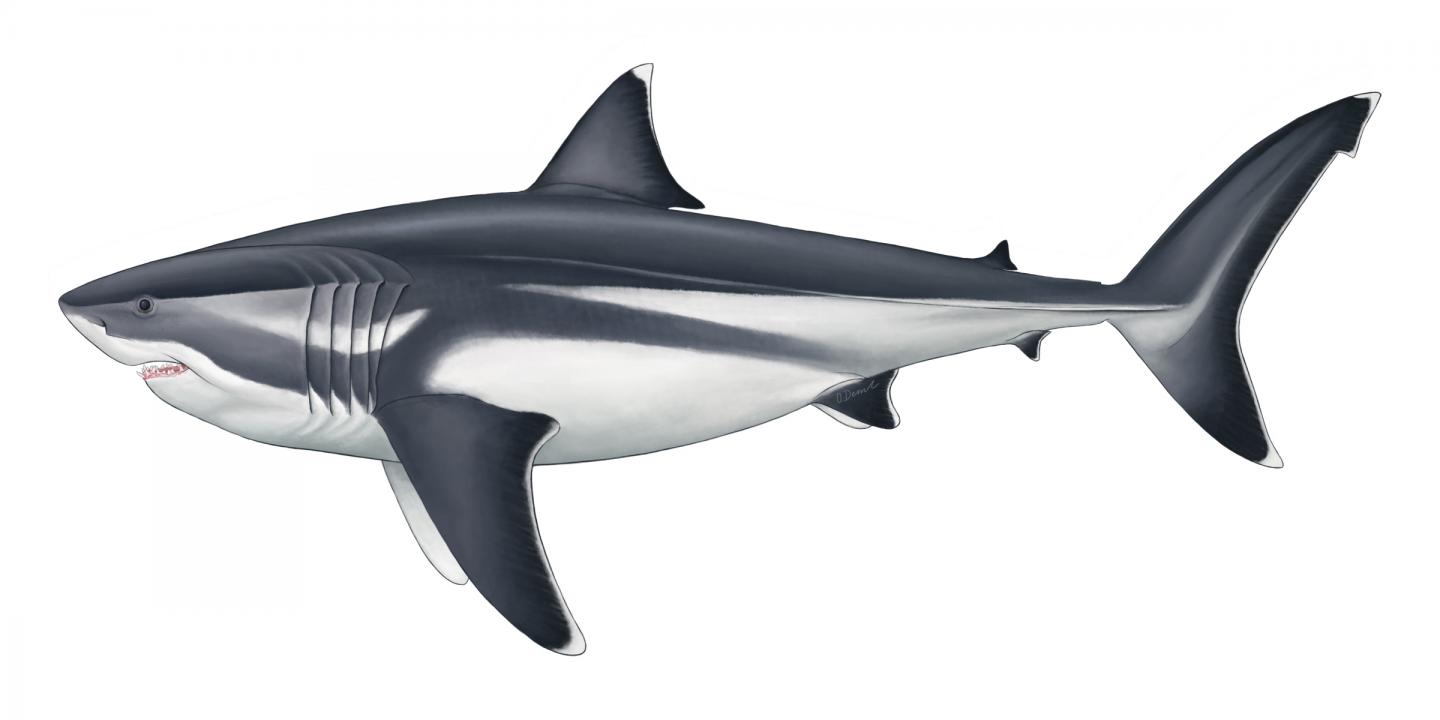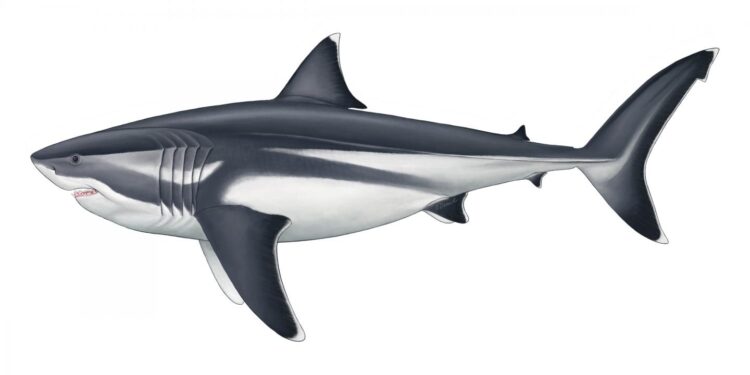A new study led by the University of Bristol and Swansea University has revealed the size of the legendary giant shark Megalodon, including fins that are as large as an adult human.

Credit: Oliver E. Demuth
A new study led by Swansea University and the University of Bristol has revealed the size of the legendary giant shark Megalodon, including fins that are as large as an adult human.
There is a grim fascination in determining the size of the largest sharks, but this can be difficult for fossil forms where teeth are often all that remain.
Today, the most fearsome living shark is the Great White, at over six metres (20 feet) long, which bites with a force of two tonnes.
Its fossil relative, the big tooth shark Megalodon, star of Hollywood movies, lived from 23 to around three million years ago, was over twice the length of a Great White and had a bite force of more than ten tonnes.
The fossils of the Megalodon are mostly huge triangular cutting teeth bigger than a human hand.
Jack Cooper and colleagues from Swansea University and the University of Bristol used a number of mathematical methods to pin down the size and proportions of this monster, by making close comparisons to a diversity of living relatives with ecological and physiological similarities to Megalodon.
The project was supervised by shark expert Dr Catalina Pimiento from Swansea University and Professor Mike Benton, a palaeontologist at the University of Bristol. Dr Humberto Ferrón from Bristol also collaborated.
Jack Cooper, who will now start his PhD at Swansea University said: “I have always been mad about sharks. As an undergraduate, I have worked and dived with Great Whites in South Africa – protected by a steel cage of course. It’s that sense of danger, but also that sharks are such beautiful and well-adapted animals, that makes them so attractive to study.
“Megalodon was actually the very animal that inspired me to pursue palaeontology in the first place at just six years old, so I was over the moon to get a chance to study it.
“This was my dream project. But to study the whole animal is difficult considering that all we really have are lots of isolated teeth.”
Previously the fossil shark, known formally as Otodus megalodon, was only compared with the Great White. Jack and his colleagues, for the first time, expanded this analysis to include five modern sharks.
Dr Catalina Pimiento said: “Megalodon is not a direct ancestor of the Great White but is equally related to other macropredatory sharks such as the Makos, Salmon shark and Porbeagle shark, as well as the Great white. We pooled detailed measurements of all five to make predictions about Megalodon.”
Professor Benton added: “Before we could do anything, we had to test whether these five modern sharks changed proportions as they grew up. If, for example, they had been like humans, where babies have big heads and short legs, we would have had some difficulties in projecting the adult proportions for such a huge extinct shark.
“But we were surprised, and relieved, to discover that in fact that the babies of all these modern predatory sharks start out as little adults, and they don’t change in proportion as they get larger.”
Jack Cooper added: “This means we could simply take the growth curves of the five modern forms and project the overall shape as they get larger and larger – right up to a body length of 16 metres.”
The results suggest that a 16-metre-long Otodus megalodon likely had a head round 4.65 metres long, a dorsal fin approximately 1.62 metres tall and a tail around 3.85 metres high.
This means an adult human could stand on the back of this shark and would be about the same height as the dorsal fin.
The reconstruction of the size of Megalodon body parts represents a fundamental step towards a better understanding of the physiology of this giant, and the intrinsic factors that may have made it prone to extinction.
###
Media Contact
Ben Donovan
[email protected]
Related Journal Article
http://dx.





